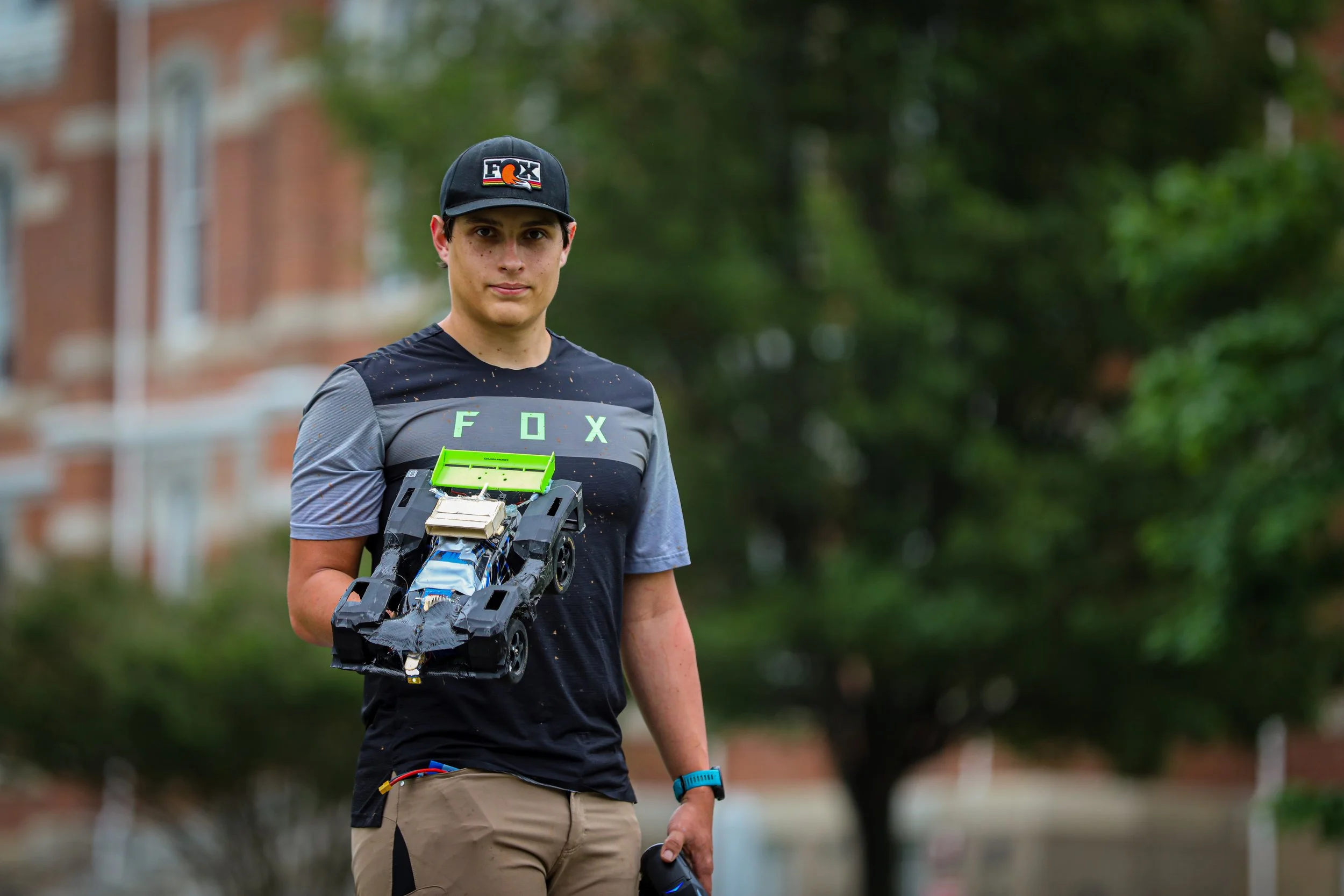A Need...for Speed
By Lukas Smith, student-contributor
A whirring motor fills the evening air. Beams of light scatter through windows, refracting again before landing on a speeding car the size of a laptop. Then, in the blink of an eye, the car explodes.
This has been Nick’s world for the past several weeks—trying to engineer the fastest RC car possible. One problem: when the car stops, it shatters.
Sophomore Nicholas Wilber (known to all as “Nick”) is often seen around Miller holding one controller or another—he owns a menagerie of remote control vehicles, ranging from cars to planes. His quest to transform an off-road monster truck into a road-racing speedster began with the start of Applied Engineering—one of Miller's most independent classes. There, each student receives a project budget, the chance to pursue any project they desire, and all the help they need from Mr. Magee, the teacher of the class and an avid engineer.
To start, Nick planned to create a 3D-printed car body, designed by him to be aerodynamic. Mr. Magee advised him on printing techniques to help reduce flex in the body. 3D printing takes time, so each iteration requires a week or more. Over time, Nick learned how to operate a 3D printer and its slicer—a complex piece of software used to translate designs into printable layers.
Once the first prototype was complete, Nick took it out for a test drive and discovered an explosive problem. When he hit the brakes, the front of the car dipped down and hit the concrete at 50 mph. Shattered plastic scattered across the street as Nick began thinking about how to stiffen the shocks. “I put the stiffest springs I could find on the car, and I went from 30-weight shock oil to 70-weight shock oil because I thought that would do it. It didn't. So I took a huge risk by going all the way up to 10K differential oil. Because they don't make 10K shock oil, I had to move all the way up into differential fluid!”
The addition of the differential fluid stiffened the shocks, preventing the car from bending as much at high speeds. Emphatic about this change, Nick tested again and found no explosion—but braking still damaged the body.
Moving on to the next probable cause of crashes, Nick installed a sway bar—a metal rod to stop the wheels from oscillating at high speeds. Then, disaster struck. On the next test, when he hit the brakes, the headlamps detached from the body and were sucked underneath the car, breaking the wiring. That kickstarted several problems: Nick was already at his budget and didn’t know how the wiring worked. Mr. Magee stepped in and allowed Nick to go over budget to buy new headlights and helped him with the wiring.
The engineering process is never complete. There’s always one more change—one more item to improve performance. Mr. Magee was always there to bounce ideas off of and guide Nick forward. “He's a great help, and I love having him as a teacher,” Nick says. As his time in the Engineering program continues, Nick will remain focused on his quest to satisfy his need for speed—one explosion at a time.









